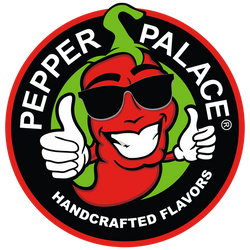Find a Store
Everything You've Ever Wanted to Know About the Scoville Scale
Folks toss the terms “Scoville Heat Units,” “SHU,” and “Scoville scale” around when they’re discussing the finer points of how much a particular chili pepper, hot sauce, or salsa is going to hurt. Any unit of measurement that can 1) be abbreviated or 2) has an official-sounding name lends a certain scientific credibility—and so it is with our dear frenemies, the chili peppers. The Scoville scale is our scientific measuring stick for the pungency of a particular chili pepper, categorizing it into mild, medium, hot, extra hot, or extremely hot. Let’s dig into the history of the Scoville scale and look at a few hot pepper rankings.
What is the Scoville scale?
Developed by pharmacist Wilbur Scoville in 1912 (yes, humanity has been obsessed with chili peppers for a long time), the initial Scoville scale referred to how many parts of sugar water would dilute a ground chili pepper until it no longer felt hot to a panel of human tasters. So, if it took 1,000 teaspoons of sugar water to render one teaspoon of ground poblano pepper to a “no-heat” level for tasters, then the poblano pepper was assigned a 1,000 Scoville Heat Unit (or SHU). Likewise, if a pepper was assigned a 220,000 SHU (like a habanero), it took 220,000 teaspoons of sugar water to neutralize the heat.
- How the Scoville scale works. Today, chili pepper heat is determined by high-performance liquid chromatography (HPLC) instead of by the subjective sensation of heat by a panel of human tasters. HPLC is a scientific process used to separate components of a mixture for analysis, and it tells us how many capsaicinoids (the chemical capsaicin) are present in parts per million. Put simply, SHU rankings are now assigned based on how much capsaicin a pepper (or hot sauce) contains.
- What the Scoville scale measures. The Scoville scale measures the heat of a particular pepper. The higher the number on the Scoville scale, the hotter the pepper.
How accurate is the Scoville scale?
The Scoville scale is reliable in the sense that an accurate scientific process (high-performance liquid chromatography) measures the amount of capsaicin present in a particular chili pepper. However, environmental factors affect the amount of capsaicin a chili pepper produces, so a jalapeno in optimal conditions will have more capsaicin than a jalapeno deprived of nutrients, sunlight, etc. Often, when you see that a pepper has a range on the Scoville scale (for example, the Scotch Bonnet ranges from around 150,000-400,000), that variance accounts for potential capsaicin differences among Scotch Bonnets. However, we can accurately say the Scotch Bonnet’s Scoville scale rating makes it an extra hot pepper that will deliver an exceptional (and to some people, unbearable) amount of heat.
What is the hottest pepper on the Scoville scale?
Since 2013, the reaper pepper has worn the title belt for the hottest on the Scoville scale. Weighing in at roughly 2,200,000 (yes, that’s more than TWO MILLION) SHU, the reaper claims the souls of your taste buds and takes them straight to hell. By comparison, the ghost pepper, or bhut jolokia, logs an atomic 1,000,000 SHU while our friendly jalapeno tops out around 5,000 SHU.
POPULAR CHILI PEPPERS AND THEIR SCOVILLE SCALE RANKING:
- 7 Pot Douglah – up to 1,800,000 SHU
- Moruga Scorpion – 1,400,000 SHU
- Naga Viper – 1,200,000 SHU
- Habanero – 150,000
- Cayenne – 50,000 SHU
- Chipotle – 2,500-8,000 SHU
- Jalapeno – 5,000 SHU
- Hatch Green – 2,000-5,000 SHU
This list gives you a quick glance at pepper hotness for comparison. If you pull a hot sauce off a friend’s shelf, and the label says it’s 150,000-200,000 Scoville units, then it’s going to be about habanero hot. That’s a searing burn for a normal person, but chiliheads consider this amount of heat to be a sunny stroll in the park.
How many Scoville units can a human handle?
In an extreme chili pepper eating contest, victims participants may be required to eat three to five raw reaper peppers—that’s 7–11 million Scoville units. Imagine falling into an active, nuclear volcano on the planet Mercury and you might get a rough idea of the heat. The higher you go on the Scoville scale, the more nefarious the side effects. Some chiliheads have reported hallucinations after eating spicy foods in the 6 million SHU range, while higher concentrations could cause vomiting, gagging, and may even make someone pass out. Scientists suggest that it would take about 13 grams of pure capsaicin to kill a 150lb. person—fortunately, no hot sauce comes close to this level of lethal heat, so you can feel confident pouring on your favorite spicy seasonings without worrying about meeting your maker.
For you regular, everyday folks, the Scoville units you can handle will depend on individual tolerances. Some of us can take the heat, and others prefer the capsaicin-less world of zero SHU bell peppers. If you’re just dipping your toes into the Scoville world, start with our mild hot sauces to determine your baseline, then go up in Scoville Heat Units as far as your pretty little heart desires.
